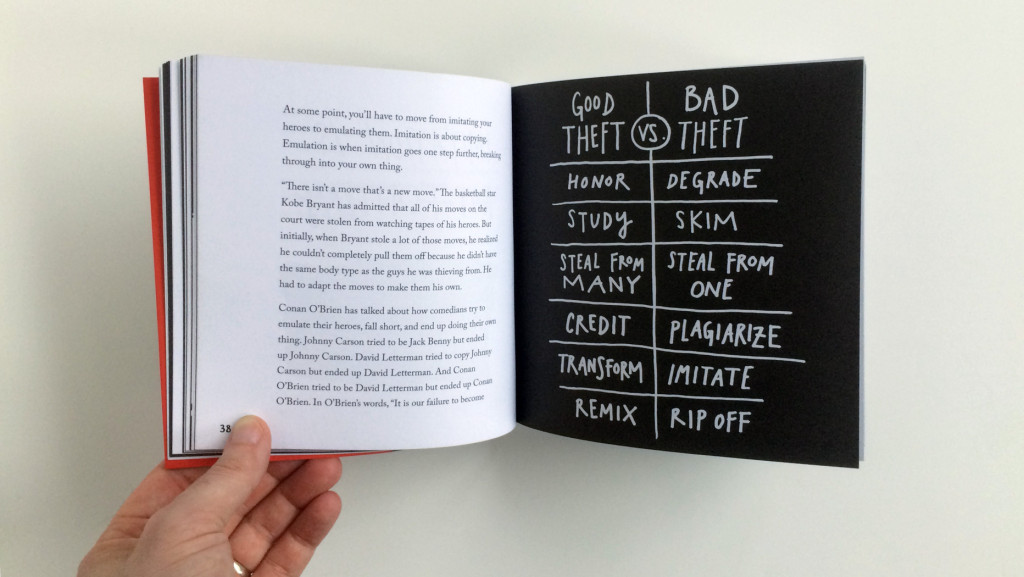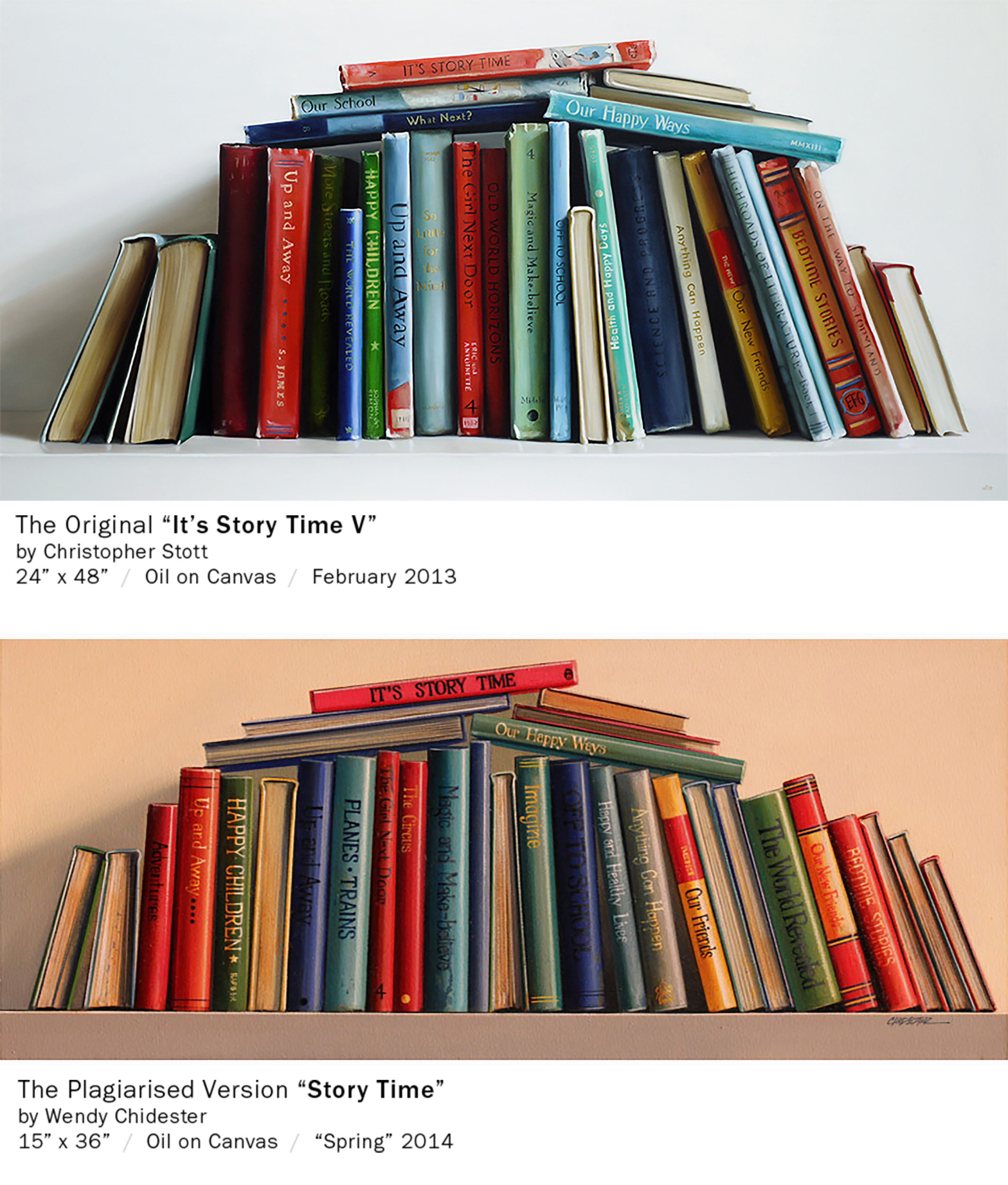In all the endeavors that we can undertake the options in art are vast. We can choose to make our work using countless techniques and methods and we can find inspiration in everything that is before us. In today’s art world, anything goes.
There are no rules, it would seem. Except one. There is one rule we agree on. In writing, music, film, design, and visual art, plagiarism is the one and only rule that cannot be broken.
When I stumbled upon Chidester’s painting called “Story Time” I was initially confused. It literally made no sense to me, it seemed impossible that I was looking at it.
I have had problems in the past with painting factories taking my images off the web and blatantly making forgeries of my work. In no way is it right for someone to literally re-paint an artist’s work and sell it. I work hard to make a living off my paintings, so when someone does this I cannot help but feel it is theft.
You can read about my painting here.
Chidester contacted me and provided a curious story, saying someone emailed her an image of my painting and she was unaware of the image was a painting.
When my paintings are shown to people on a computer screen they react by initially thinking they are looking at a photograph. It is realism and computer or smartphone screens flatten and miniaturize images. In “real life” my paintings are far more “painterly” than what you see on a tiny screen in the palm of your hand.
However, I am left a little confused as to how Chidester, who has been painting for decades, could work so long from my images and not once come to realize she was looking at a painting. Even “non-painters” eventually understand they are looking at paintings when they look close for a few brief minutes. Another painter will notice the markings of a painting much sooner and with more confidence than anyone else. Especially after looking long enough to be able to exact a composition and arrangement of books and titles. And this is where I clearly realize I’m only getting a fraction of the truth from the person who copied my work.
Did Chidester ask for the copied paintings back? Did she destroy them? Did she explain to the buyer what happened? Was the buyer refunded?
This blog post serves as an example that artists will find important and familiar. If you are doing commission work, research the source material given to you – find out everything you can. You don’t want to stumble into a career-threatening mess.
And if you are copying someone else’s work because you like it and want to learn from it, whatever you do, don’t sell the work as your own. In fact, just keep any copied work in your own portfolio and mark it as practice. Don’t even share it on the web. If you do, you might end up looking like a hack and a thief.
I think it’s a good time to point out Austin Kleon’s book Steal Like an Artist. There are rules at play here, and if you follow them, you’ll be fine.

